This article was co-authored by Karen Litzy, PT, DPT. Dr. Karen Litzy, PT, DPT is a licensed physical therapist, international speaker, owner of Karen Litzy Physical Therapy, PLLC, and the host of the Healthy Wealthy & Smart podcast. With over 20 years of experience, she specializes in a comprehensive approach to practicing physical therapy utilizing therapeutic exercises, manual therapy, pain education, and home exercise programs. Karen holds a Master of Science in Physical Therapy and a Doctor of Physical Therapy from Misericordia University. Karen is a member of the American Physical Therapy Association (APTA) and is an official spokesperson for the APTA as a member of their media corps. She lives and works in New York City.
There are 16 references cited in this article, which can be found at the bottom of the page.
This article has been viewed 70,536 times.
Your spine contains a number of intervertebral discs that are stacked between the bones and act as shock absorbers when you perform normal, daily activities. A bulging disc, also known as a herniated disc, occurs when excessive strain is placed on your spine, the outer part of a disc weakens or tears, and the surrounding vertebrae move in and place pressure on your nerves. Often this results in pain.[1] Bulging discs can be caused by a of lack of exercise, excessive weight gain, or sudden movements or strenuous activities that place pressure on your spine, such as twisting your body violently or lifting heavy objects. By maintaining good health and learning how to handle your body during periods of physical stress, you can prevent yourself from getting a herniated disc.
Steps
Exercising and Maintaining a Healthy Lifestyle
-
1Exercise on a regular basis. People who do not exercise face an elevated risk of back pain. A lack of exercise can make your back muscles weak and stiff, restricting movement, increasing stress on the back, and increasing the likelihood of a herniated disc.[2] Exercising will strengthen the muscles that support your spine as well as the muscles in your back, stomach, and legs. It can also help to relieve back pain.[3]
- Try to get 30 minutes of exercise at least five days per week. You can do anything you like, such as walking, biking, swimming, or dancing. Just choose an activity you like to ensure you actually stick to it.[4]
- Regular movement can help keep your spine in good health because it allows the fluid within the discs to move around and nourish the area.[5]
-
2Perform a variety of strength training exercises. Perform strength training exercises at least twice per week. Choose exercises that target your back, stomach, and legs to increase the strength and flexibility of these muscles, and reduce the risk of a herniated disc. Try partial sit-ups or crunches, pelvic tilts, bridging exercises, and plank exercises.[6]
- Crunch. To do a crunch, lay on your back. Keeping your knees bent, raise your shoulders about 3–6 inches (8–20 cm) off the floor, exhaling on the way up and inhaling on the way down. Do this slowly 8-10 times with your arms crossed over your chest.
- Pelvic tilt. To do a pelvic tilt, lie on your back with your knees bent and feet flat on the floor. Then, tighten the buttocks and pelvis so that they tip up slightly, pressing your lower back to the floor. Hold for one second and then relax.
- Bridging exercise. A bridging exercise is an advanced progression of a pelvic tilt. To do a bridging exercise, lie on your back with your knees bent. Tighten the buttocks and raise your buttocks off the floor. Hold the position for 10 to 20 seconds and lower back to the initial pelvic tilt position. Repeat four more times
- Plank exercise. A plank exercise is one of the best exercises to strengthen the core. To do a plank exercise, lie on a floor or bed. Lift your upper body over your elbows while getting on your toes. Hold your body in a straight line and tighten your stomach muscles. Hold the position for 10 to 20 seconds. Lower your body, rest, and repeat four more times.
Advertisement -
3Add moderate aerobic exercise to your regimen, as well. Aerobic exercise increases blood flow to the back, providing nutrients that can support healing. It also increases balance, strength, and flexibility that will help to prevent injuries like a herniated disc. Low-impact exercises also help to relieve existing lower-back pain. These can include swimming, bicycling, elliptical training, water therapy, walking, lumbar extension strength training, and yoga.[7]
- Aim for a total of at least 150 minutes of moderate exercise per week, such as walking or swimming. If you prefer vigorous aerobic activities such as running or dancing, perform at least 75 minutes of those exercises per week.
-
4Avoid excessive or improper exercise. Some research suggests that certain high-impact exercises eventually raise your risk for a bulging disc. Likewise, improper or overly intense exercise may lead to back troubles. A jerky golf swing or incorrect use of a rowing machine will put extra stress on your spine and, over time, may cause an injury.
- Sometimes a small adjustment in form can help. For example, between 30% to 70% of cyclists experience lower back pain, which may be improved by adjusting the seat angle.[8]
- You should also avoid exercises that are repetitive in nature and involve a rotation and twisting motion. Some sports such as football or golf can involve these type of movements.
-
5Wear proper shoes for any activities you perform. This practice will provide your back with additional support and may prevent other types of injuries from occurring. High-heels, for example, can throw off your alignment and increase the risk of a slipped disc, putting particular stress on the lower back.[9]
- Consult with the salesperson in a specialized foot-wear or retail store to determine the best shoes for your lifestyle. Custom-made shoes will best address specific gait problems but can cost between $150 to $200.[10]
- Running shoes are good for exercise as well as everyday use, as they give stability to your natural arch and provide cushioning -- essential for a healthy gait. New Balance brand is recommended by some doctors.[11]
- Orthotic inserts and prescription orthotics are two other options. The latter, called "functional orthotics," are usually made of plastic or graphite and target issues caused in your back or elsewhere through abnormal motion.[12]
- Some runners promote so-called "minimalist shoes," which are designed to maximize contact between the ball and center of your foot and the ground, rather than your heel, to mimic bare-footed running. Recent research suggests that such shoes might not be as good for your feet and back as is claimed, however.[13]
-
6Maintain a healthy weight. Excess body weight puts extra strain on your back and spine and can contribute to injuries. Do you have a healthy body mass index? Consult the British National Health at https://www.nhs.uk/live-well/healthy-weight/bmi-calculator/ to find out. There are a number of ways to maintain a healthy body weight. Regular exercise is a must. Aim for a minimum of 30 minutes of aerobic exercise like walking, running, or swimming on most days as well as 20 minutes of strength training (like lifting weights) twice a week.
- Exercise has to be supported by a healthy lifestyle, including diet. Don’t skip meals, particularly breakfast. Depriving yourself will simply tempt you to binge and slow your metabolism. To keep yourself satisfied, eat 4 to 5 small meals spread throughout the day.
- Eat plenty of fruits and vegetables, healthy carbohydrates like beans, whole wheat, and brown rice; healthy fats such as nuts, olive oil, and fish; lean protein like chicken, turkey, or eggs; and foods that contain calcium to strengthen your bones. Limit high-calorie foods, sugars, and added fats from fried foods, butter or margarine, salad dressings, or rich sauces.[14]
- Eat proper portion sizes. According to the Mayo Clinic, the typical meat portion size is about as big as a deck of playing cards. Fats should be about the size of two dice. For carbohydrates, aim for a portion the size of a hockey puck. Fruit and vegetable portions should be the size of tennis and baseballs, respectively.[15]
-
7Stop smoking. Smoking tobacco decreases the oxygen flow to your intervertebral discs and prevent them from absorbing the nutrients they need to function normally, causing the discs to degenerate more rapidly and become brittle.[16] . Quitting will have an immediate remedial effect, and will also help your overall well-being. If you are having problems quitting smoking, speak to your health care provider for assistance or for information on joining a support group.
Developing Good Physical Posture
-
1Use proper lifting techniques. Lifting heavy objects improperly is the most common cause of back injuries, including bulging discs. Lift from your legs rather than your back. Stand as close as possible to the object that you wish to lift, with feet spread apart to give you a wide base. Then squat down and bend your knees, lifting up using the large muscles in your legs. As you lift, hold the object close to your body to reduce the strain on your back.[17]
- Do not bend at the waist!
- If an object is too heavy for you to lift on your own, seek help.
- Also keep in mind that there is a greater risk of injury within one hour of waking up. This is because your spine has been in a horizontal position during sleep and has not fully rehydrated. Avoid lifting anything within one hour of waking up, especially if the movement involves twisting and bending.
-
2Maintain good posture at all times. A correct posture will keep your head, shoulders, and hips aligned and your head up and reduce strain on your back. Incorrect posture, conversely, places extra stress on the spine. If you are standing or walking, stand up straight with your shoulders back and abdomen tucked in. If you must sit, use a pillow or other object to support your lower back if you do not have an adjustable, ergonomic chair to support your body. Your feet should either rest flat on the floor or be elevated.[18]
- Try using a footstool to elevate your feet and legs when you are seated.
- Riding in a vehicle for long periods can be quite stressful on the spine. Consider moving the car seat forward as much as possible to avoid leaning forward. Try to stop and walk about for a few minutes every hour, if possible.
-
3Use a bed that supports your lower back. Extend good posture to your sleep. Sleep on a firm mattress. To keep your mattress firm, replace it every 8 to 10 years and flip it every 3 months. While using the bed, sleep on your back or on your side instead of on your stomach or in the fetal position. Sleeping on your back and on your side will reduce your risk for a bulging disc.[19]
-
4Stretch your back regularly. Stretch your back whenever you have to endure long periods sitting down. This will prevent you from becoming stiff while at work or on a long car trip. Try the following quick exercise as a way to keep limber.
- First, stand up straight and spread your legs hip-width apart. Bend your knees slightly and place both of your arms straight out in front of you at the height of your shoulders, keeping your shoulders down and relaxed.
- Clasp one hand with the other hand, then drop your head toward your chest. Pull your abdominal muscles inward to protect the lower section of your back and slightly round your lower back.
- Then, create the letter "C" shape with your torso by tucking your hips slightly forward, stretching your arms in front of you until you feel your shoulder blades moving apart. You will then begin to feel the stretching of your upper and lower back and your shoulders.
-
5Stretch your legs. Make sure that you take time every day to stretch your leg muscles, such as your hamstrings, calves, and thighs. It’s important to stretch all of your lower body muscles to avoid any tightness that might affect your back.
- Try doing a forward bend, hamstring stretches, or a butterfly stretch.
Expert Q&A
-
QuestionIs there anything you can do to prevent a bulging disc?
 Karen Litzy, PT, DPTDr. Karen Litzy, PT, DPT is a licensed physical therapist, international speaker, owner of Karen Litzy Physical Therapy, PLLC, and the host of the Healthy Wealthy & Smart podcast. With over 20 years of experience, she specializes in a comprehensive approach to practicing physical therapy utilizing therapeutic exercises, manual therapy, pain education, and home exercise programs. Karen holds a Master of Science in Physical Therapy and a Doctor of Physical Therapy from Misericordia University. Karen is a member of the American Physical Therapy Association (APTA) and is an official spokesperson for the APTA as a member of their media corps. She lives and works in New York City.
Karen Litzy, PT, DPTDr. Karen Litzy, PT, DPT is a licensed physical therapist, international speaker, owner of Karen Litzy Physical Therapy, PLLC, and the host of the Healthy Wealthy & Smart podcast. With over 20 years of experience, she specializes in a comprehensive approach to practicing physical therapy utilizing therapeutic exercises, manual therapy, pain education, and home exercise programs. Karen holds a Master of Science in Physical Therapy and a Doctor of Physical Therapy from Misericordia University. Karen is a member of the American Physical Therapy Association (APTA) and is an official spokesperson for the APTA as a member of their media corps. She lives and works in New York City.
Physical Therapist Staying active and having a good range of motion will help protect your back, but there are a number of factors that can lead to a bulging disc, so there's no way to absolutely ensure you'll prevent it from happening.
Staying active and having a good range of motion will help protect your back, but there are a number of factors that can lead to a bulging disc, so there's no way to absolutely ensure you'll prevent it from happening.
References
- ↑ https://www.nlm.nih.gov/medlineplus/ency/article/000442.htm
- ↑ https://www.betterhealth.vic.gov.au/health/conditionsandtreatments/back-pain-disc-problems#other-causes-of-back-pain
- ↑ https://health.clevelandclinic.org/strong-core-best-guard-back-pain/
- ↑ Karen Litzy, PT, DPT. Physical Therapist. Expert Interview. 27 August 2020.
- ↑ Karen Litzy, PT, DPT. Physical Therapist. Expert Interview. 27 August 2020.
- ↑ https://www.spineuniverse.com/wellness/exercise/building-core-strength-reduce-back-pain
- ↑ http://www.spine-health.com/wellness/exercise/low-impact-aerobic-exercise
- ↑ https://www.cyclingweekly.com/fitness/lower-back-pain-dont-blame-the-bike-32094
- ↑ https://osteopathic.org/what-is-osteopathic-medicine/the-real-harm-in-high-heels/
- ↑ http://www.everydayhealth.com/news/best-worst-shoes-back-pain/
- ↑ http://www.everydayhealth.com/news/best-worst-shoes-back-pain/
- ↑ http://www.everydayhealth.com/news/best-worst-shoes-back-pain/
- ↑ https://well.blogs.nytimes.com/2013/06/05/is-barefoot-style-running-best-new-studies-cast-doubt/
- ↑ http://www.nhs.uk/Conditions/Slipped-disc/Pages/Prevention.aspx
- ↑ http://www.mayoclinic.org/healthy-lifestyle/weight-loss/multimedia/portion-control/sls-20076148
- ↑ http://orthoinfo.aaos.org/topic.cfm?topic=a00534
- ↑ https://myhealth.alberta.ca/Health/pages/conditions.aspx?hwid=hw206944
- ↑ https://www.spine-health.com/wellness/ergonomics/good-posture-helps-reduce-back-pain
- ↑ https://my.clevelandclinic.org/health/diseases_conditions/hic_Herniated_Disc
About This Article
To prevent a bulging disk, make sure to sit and stand with proper posture so you don’t put excess pressure on your spine. For example, if you’re sitting, you should place your feet flat on the floor and pull your shoulders back so they’re aligned with your hips. Besides having good posture, you should exercise regularly to strengthen the muscles that support your spine. You can try walking, biking, swimming, or dancing for 30 minutes a few times a week. It’s also important to do strength training to build up your stomach and leg muscles, which also support your spine. To do this, try doing crunches or planks a couple times a week. To learn how to stretch your back to prevent a bulging disk, read more from our Medical co-author.
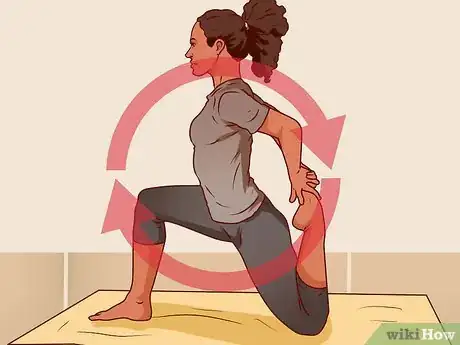

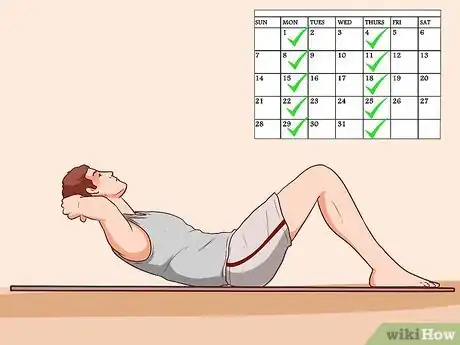
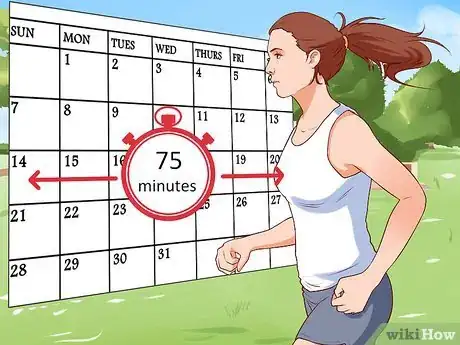
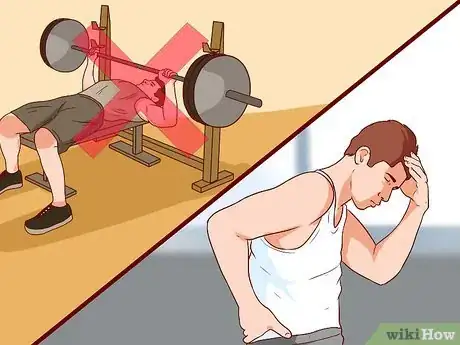
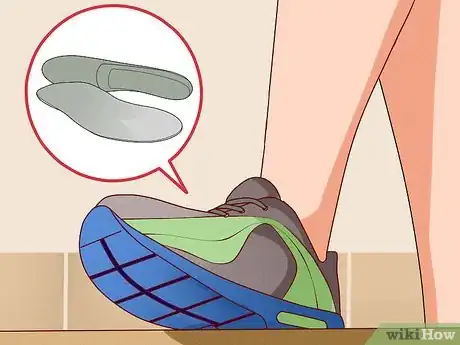
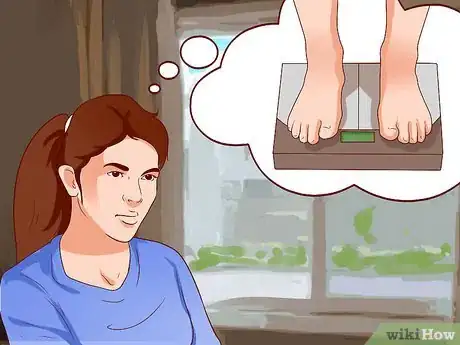

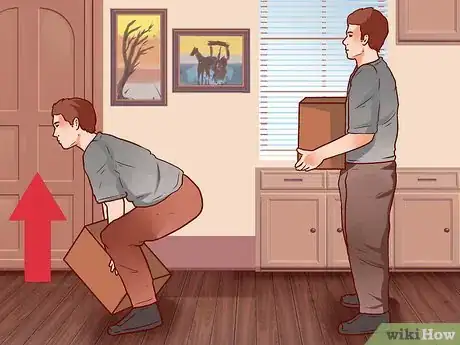

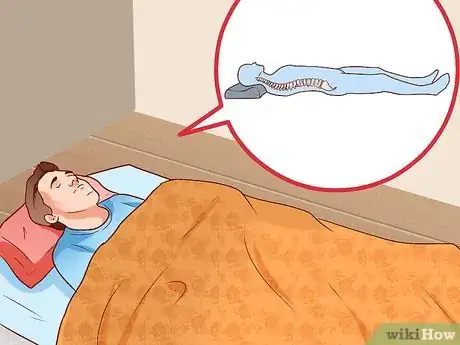
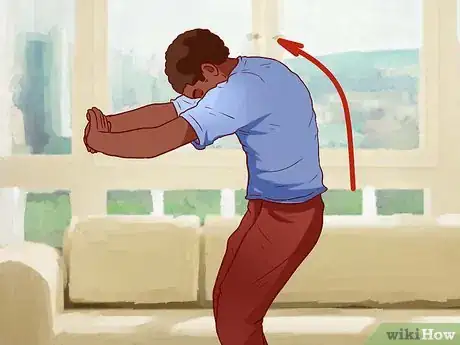
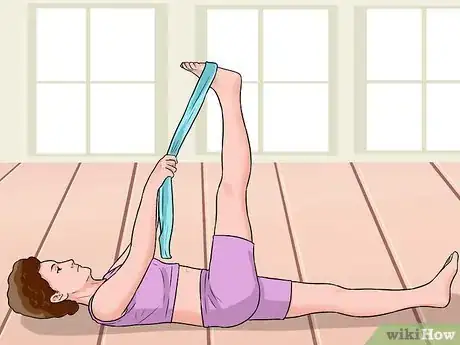








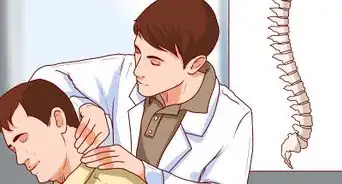











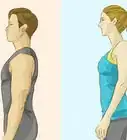
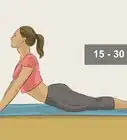





































Medical Disclaimer
The content of this article is not intended to be a substitute for professional medical advice, examination, diagnosis, or treatment. You should always contact your doctor or other qualified healthcare professional before starting, changing, or stopping any kind of health treatment.
Read More...